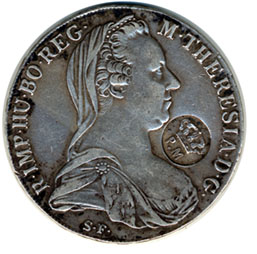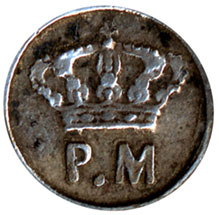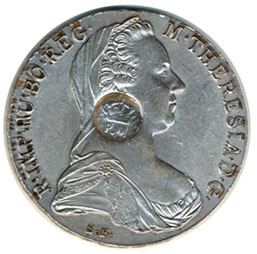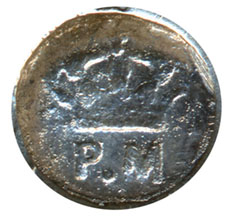Overview
As one would expect, there are lots of Maria Theresia Taler forgeries. We separate forgeries into those made to be used as currency, and those made to be sold to coin collectors or tourists.As a general rule, we do not identify coins struck by governments or government agencies as forgeries, even though some of those may not have been authorized by the Austrian government. If a strike is identified as unauthorized, the term "unauthorized restrike" would probably be more appropriate.
Privately struck coins are only considered forgeries if the strike was not authorized by the Austrian government or Austrian mint.
Forgeries to be used as currency
Forgeries to be used as currency are relatively rare (compared to the total number of Maria Theresia Talers struck). Typically, the weight of such coins will be less than that of the original, and/or the coin material will not be silver. Quality of currency forgeries is often bad to very bad. Such forgeries are therefore typically easy to identify.
Forgeries made to be sold to collectors
Such forgeries are often difficult to identify, even for experts. The idea here is to either forge a rare variant (to make a lot of money from a few coins), or to produce a common variant in worse material than the original (to make a lot of money by selling a lot of forgeries). The latter type may also be called Tourist forgery, since it is often specifically made to be sold to tourists. This type will often be encountered in Asian countries, especially China, and in Arabic countries.
Falsified authentic restrikes
Sometimes authentic restrikes are falsified to create a more desirable and collectable coin. Two types of such falsifications are currently known to exist:- Removed obverse signature S.F.
Of the two specimen I have been able to examine, one is clearly falsified. The other is questionable, showing an excessive amount of mint marks. Since this variant has been known for some time (it is listed as Hafner 48), it is at least possible that genuine specimen exist. - Removed saltire (cross) in reverse
I have been able to examine two specimen of this type. Both are clearly falsified. Genuine specimen of this variant are unlikely to exist.
- Visible raise, elevation, unevenness, or imperfection where removed letter(s) are expected to be.
- Traces of mechanical manipulation, such as very fine scratches.
- Discoloration, sometimes only visible under colored light.
- Dirt or what appears to be patina limited to the affected area.
List of currently known forgeries
Counterstamp forgeries
Many counterstamps currently on the market have to be considered forgeries. Such forgeries can often be identified as follows:- Coins are often in excellent condition.
- The counterstamp may have an uneven appearance, such as caused by a cast.
- The coin's strike date (based on the coin variant) and the counterstamp date do not match. Older counterstamps may be seen on more recently struck coins. The coin will often be a variant struck after 1930/40.
- Important identification characteristics have 'accidentially' been overstruck.
In addition, many counterstamps on Maria Theresa Talers may in fact be phantasy products, though this is only a theory at this time. Please see Counterstamps for more information.
The following table compares a possibly authentic counterstamp with an obvious forgery. The forged counterstamp is struck on a 20th century coin, and the counterstamp die shows errors which might have been created for example by a cast or by a rusted (and cleaned) die.
|
Possibly genuine Counterstamp
Host coin type: IIIb3-2, Cc7I-e, W2a [1865-70] |

|

|
|
Forged Conterstamp
Host coin type: IIIb3-2, Cc8-e, W2 [struck from 1950] |

|

|